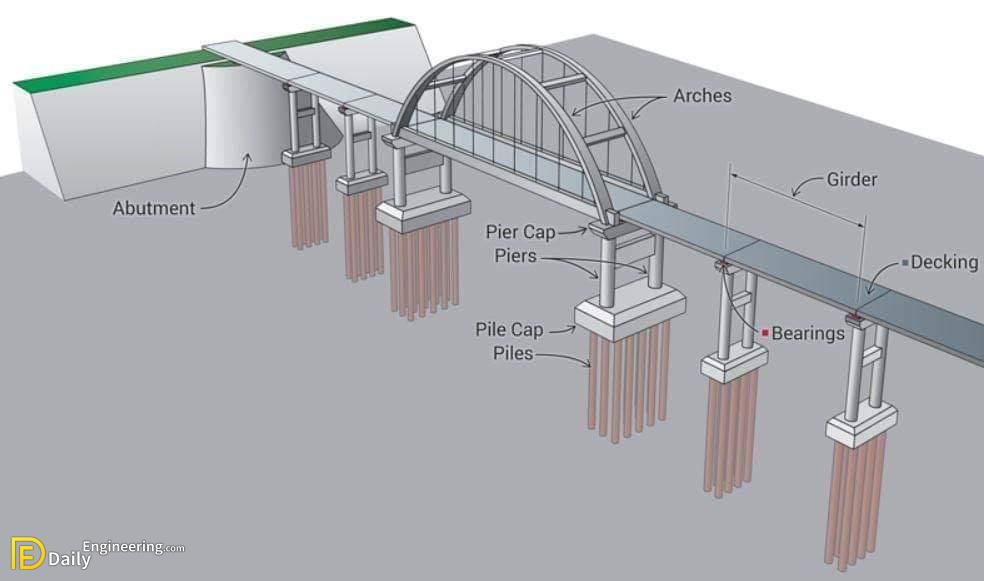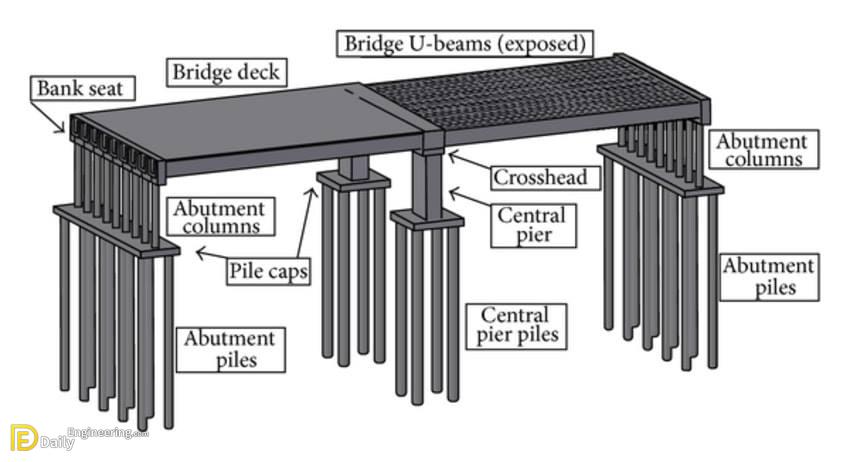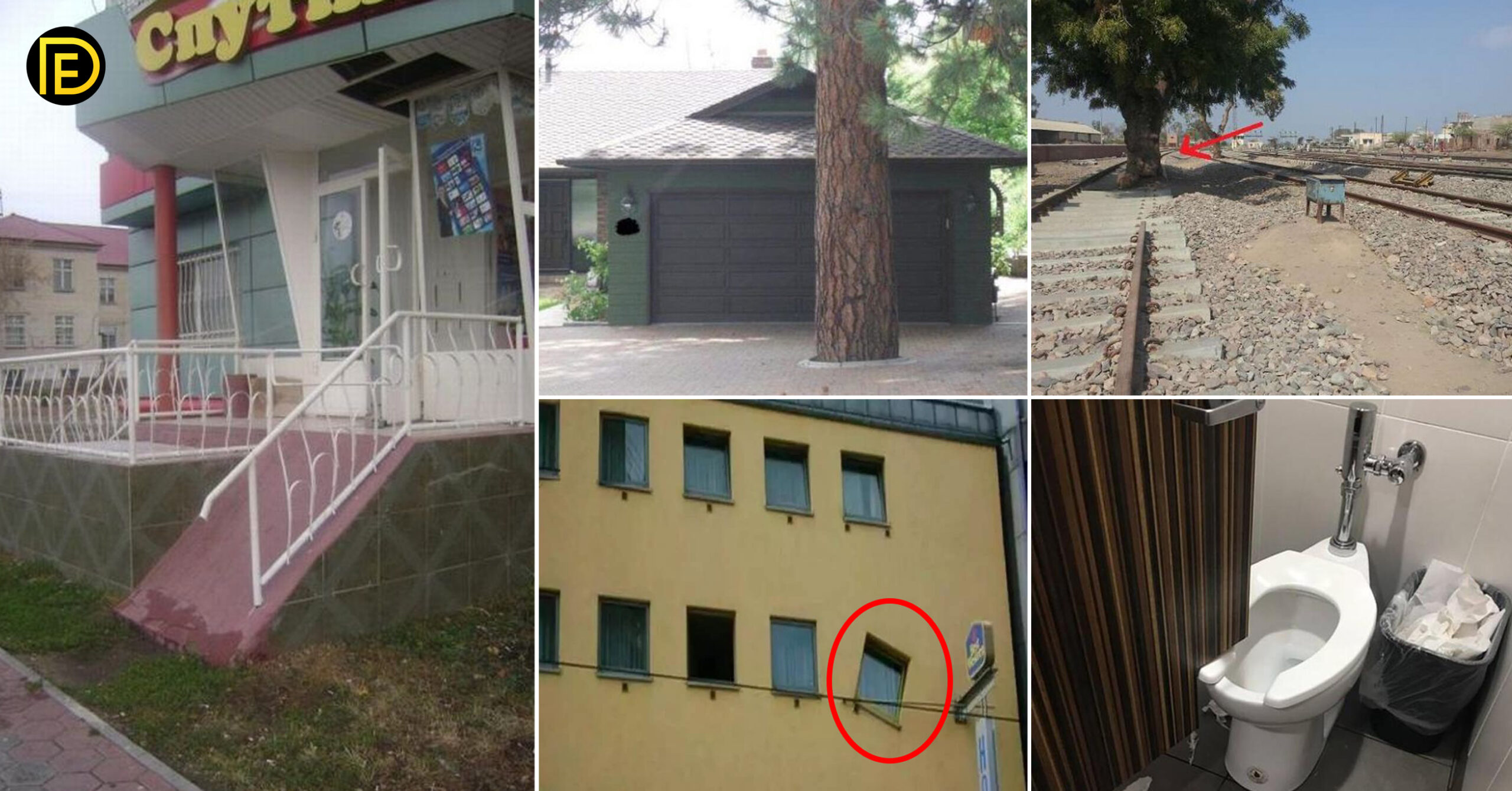What is a bridge?
A bridge is a structure providing passage over an obstacle without closing the way beneath. The required passage may be for a road, a railway, pedestrians, a canal, or a pipeline. The obstacle to be crossed may be a river, a road, a railway, or a valley. In other words, the bridge is a structure for carrying road traffic or other moving loads over a depression or obstruction such as a channel, road, or railway.
Components of bridge
1- Superstructure or Decking
This includes slab, girder, truss, etc. This bears the load passing over it and transmits the forces caused by the same to the substructures.
2- Bearings
The bearings transmit the load received from the decking onto the substructure and are provided for the distribution of the load evenly over the substructure material which may not have sufficient bearing strength to bear the superstructure load directly.
3- Substructure
This comprises piers and abutments, wing walls or returns, and their
foundation.
· Piers and Abutments
These are vertical structures supporting deck/bearing provided for transmitting the load down to the bed/earth through the foundation.
· Wing walls and Returns
These are provided as extensions of the abutments to retain the earth of the approach bank which otherwise has a natural angle of repose.
· Foundation
This is provided to transmit the load from the piers or abutments and wings or returns to and evenly distribute the load onto the strata. This is to be provided sufficiently deep so that it is not affected by the scour caused by the flow in the river and does not get undermined. While the above mentioned are structurally operational parts, for safety handrails or parapets, guard rails or curbs are provided over the decking in order to prevent vehicles or users from falling into the stream or for the separation of traffic streams.
Types Of Bridges
1- Beam Bridges
Beam bridges are the simplest bridge-type that normally consists of one or more spans, supported by abutment or pier at each end. Beam bridges are usually constructed of RCC or steel or a combination of both RCC and Steel. The concrete elements used in beam bridges may be reinforced, prestressed or post-tensioned.
Compression and Tension
Compression: As live loads, such as cars and trucks, travel across the bridge, the force of compression acts on the top of the roadway and passes down into the piers.
Tension: The force of tension acts on the underside of the roadway, which is pulled apart by the live loads pressing down on the top of the roadway.
2- Arch Bridges
Arch bridges were built by the Romans and have been in use ever since. They are often chosen for their strength and appearance. It is the shape of the arch that gives the bridge its strength, which is reinforced by placing supports, or abutments, at its base. Arch bridges can be built from various materials, including wood, stone, concrete, and steel.
Compression and Tension
Compression: The force of compression is greatest at the top of the arch. The abutments press against the bottom of the arch, preventing the bases of the arch from being pushed outward.
Tension: The force of tension is strongest at the bottom of the arch and pulls the sides outward. In general, the larger and shallower the arch, the greater the effects of tension and the need for abutment support.
Types of arch bridge
1- Hinge-less arch bridge
2- Two hinged arch bridge
3- Three hinged arch bridge
4- Tied arch bridge
3- Truss Bridges
The superstructure of the truss bridge is constructed by using trusses which are comprised of many small elements forming triangular trusses. Truss is used because it is a very rigid structure and it can transfer the load from a single point to a much wider area.
Compression: As traffic pushes down on the roadway, compression acts on the upper horizontal members of the truss structure.
Tension: Tension acts on the bottom horizontal members of the truss structure. The forces of tension and compression are shared among the angled members.
4- Suspension Bridges
In a suspension bridge, the deck slab is suspended using ropes, chains, or high tensile strength steel cables. The roadway hangs from massive steel cables, which are draped over two towers and secured by anchors on both ends of the bridge. The anchors are made from solid concrete blocks. The cables transfer the loads into compression in the two towers. usually, this type of bridge can span 2000 – 7000 feet.
Compression and Tension
Compression: Traffic pushes down on the roadway, but because it is suspended from the cables, the weight is carried by the cables, which transfer the force of compression to the two towers.
Tension: The force of tension is constantly acting on the cables, which are stretched because the roadway is suspended from them.
5- Cable-Stayed Bridges
Cable-stayed bridges are similar to suspension bridges as they also use cables but in different forms. They consist of fewer cables and the height of the towers is much greater than the suspension bridge.
Compression and Tension
Compression: As traffic pushes down on the roadway, the cables, to which the roadway is attached, transfer the load to the towers, putting them in compression.
Tension: The force of tension is constantly acting on the cables, which are stretched because they are attached to the roadway.
6- Cantilever Bridges
A cantilever bridge is formed of cantilevers projecting from supporting piers. The ends of a cantilever bridge are treated as fixed. A cantilever bridge combines the advantages of a simply supported span and a continuous span. For long spans and deep valleys and at places where it will not be practicable to use centering, cantilever bridges are more suitable. They are suitable in case of uneven settlement of the foundation. The construction of a cantilever bridge may either be of the simple type or of the balanced type.
Click here to download the PDF file
https://youtu.be/xqKAmRoNT6U
Click Here To See 8 Water Bridges From Around The World That’ll Make You Want To Float Across One




































